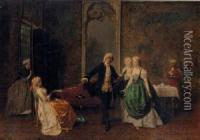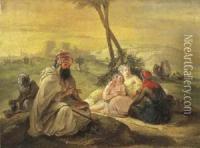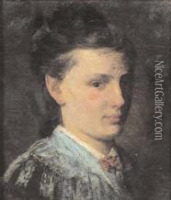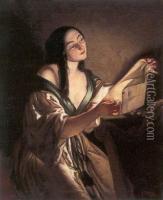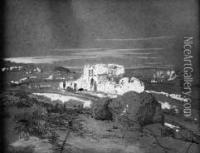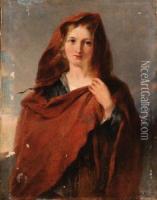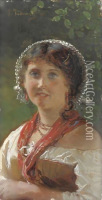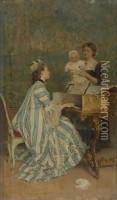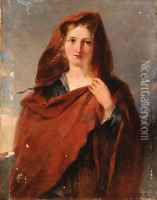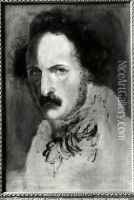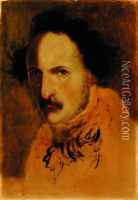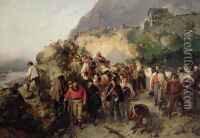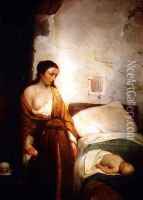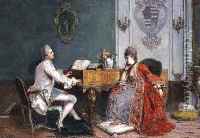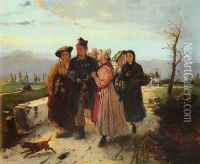Girolamo Induno Paintings
Girolamo Induno was an Italian painter, born in Milan on December 13, 1825. He was part of the Romantic movement and was known for his historical scenes, genre paintings, and portraits. Girolamo was the younger brother of Gerolamo Induno, another notable painter of the era. Initially, Girolamo showed a strong interest in engineering but eventually followed in his brother's footsteps to pursue a career in art.
Girolamo studied at the Brera Academy in Milan, where he was influenced by the works of Francesco Hayez, a leading artist of Romanticism in Italy. Induno participated in the Five Days of Milan, a major uprising that took place in 1848 as part of the wider Revolutions of 1848 that swept through Europe. His participation in this event had a significant impact on his work, as he often depicted scenes related to the Italian struggles for independence and unification, known as the Risorgimento.
Throughout his career, Induno enjoyed considerable success. He was appreciated for his ability to portray the emotions and struggles of his subjects with sensitivity and a keen eye for detail. His works were often characterized by their narrative quality and historical accuracy, which made them popular with the public. He exhibited widely, including at the Brera Academy and international exhibitions, and received numerous awards for his work.
Girolamo Induno continued to paint and exhibit his works until his death on December 18, 1890, in Milan. His contributions to Italian art, particularly his depictions of the Risorgimento, have made him a respected figure in the history of nineteenth-century Italian painting. Today, his works are preserved in various art galleries and museums throughout Italy and continue to be studied and admired for their historical significance and artistic merit.

